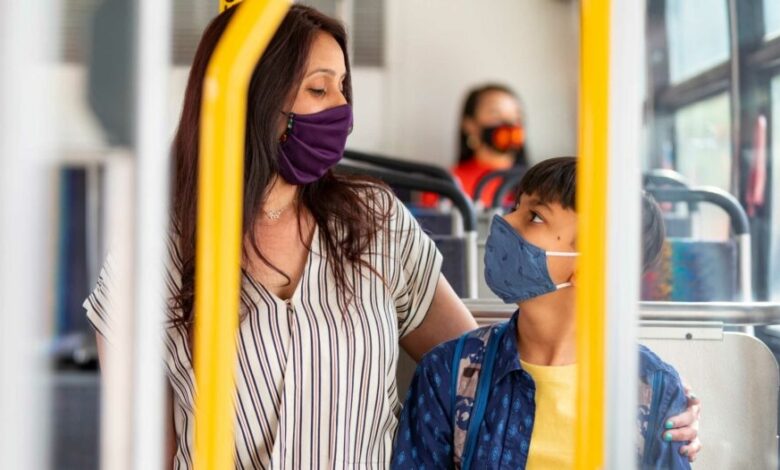5 Essential Safety Tips for Metro Bus Commuters

Navigating the bustling city streets via metro bus can be both an efficient and eco-friendly way to travel. However, amidst the convenience, safety concerns lurk for the daily commuter. With the National Safety Council reporting thousands of bus-related injuries each year, it’s clear that staying safe isn’t just about reaching your destination—it’s about how you get there.
Read More: Understanding Your Rights: Navigating Car Accident Injury Claims
Understanding the Metro Bus System
Know the Routes and Schedules
Planning is the first step to a safe commute. Understanding the bus routes and schedules ensures you’re not left vulnerable, waiting for long periods at the bus stop, especially during off-peak hours. Utilize the official metro websites, apps, or printed schedules to plan your route. Real-time updates can be a lifesaver during delays or service disruptions.
Familiarize Yourself with Bus Etiquette and Rules
Metro buses have their own set of rules and etiquette designed to keep everyone safe. From priority seating for the elderly and disabled to restrictions on eating, drinking, or playing loud music, these guidelines foster a secure and comfortable environment for all passengers. Ignorance isn’t just discourteous—it can be dangerous.
Personal Safety Measures
Stay Alert and Vigilant
Remaining observant is your best defense against potential hazards. Keep an eye out for suspicious behavior or unattended packages, and always be aware of the nearest exit. Avoid becoming engrossed in your phone or other distractions that could make you a target for theft or prevent you from noticing an emergency situation developing.
Secure Your Belongings
Personal belongings can easily become lost or stolen in the hubbub of a crowded bus. Use bags with secure closures and keep them in your lap or between your feet to prevent them from being snatched or forgotten. If you suspect you’ve been pickpocketed, report it to the bus driver immediately.
Boarding and Alighting the Bus Safely
Boarding the Bus
A safe journey starts the moment you step onto the bus. Always allow departing passengers to alight before boarding. If you’re using a mobility aid or have a stroller, make sure the driver is aware before you board. Never run towards a bus—drivers may not see you, and you could injure yourself or others.
Alighting the Bus
Exiting the bus requires just as much care. Signal your stop in advance, and remain seated until the bus comes to a complete stop. Take your time stepping down, and watch for cyclists or cars that may not stop for a bus.
Safety While on the Bus
Choosing the Right Seat
Where you sit can impact your safety. If you’re traveling alone, you might feel safer sitting near the driver or in a seat where you can see the entire bus. Avoid sitting in the rear corners where you might be isolated.
Interacting with Others
Most fellow passengers are just commuting like you, but if someone’s behavior makes you uncomfortable, trust your instincts. Move to another seat if possible, and if the situation escalates, discreetly notify the bus driver.
For more information on what to do if you find yourself in a precarious situation on public transportation, consider reading about what to do after a metro bus accident.
What to Do in Case of an Emergency
Emergency Procedures
Every commuter should be familiar with the emergency procedures on a metro bus. Locate the emergency exits and read the instructions often found on or near the exits. In the event of an accident, remain calm and follow the driver’s instructions. If an evacuation is necessary, leave your belongings and proceed quickly and carefully to the nearest safe exit.
Reporting Incidents
If you witness any incidents or emergencies, it’s crucial to report them to the metro bus authorities as soon as possible. Use the emergency intercom if available, or speak directly to the bus driver. Provide as much detail as you can, including the time, location, and nature of the incident. Your prompt reporting can prevent further harm and ensure a swift response from emergency services.
Read More: The Essential Guide to Hiring a Motorcycle Accident Lawyer
Conclusion
Your safety on a metro bus commute is not something to take lightly. By planning your route, staying alert, securing your belongings, and knowing what to do in an emergency, you can protect yourself and others. Always remember that safety is a shared responsibility—your actions can contribute to a safer commute for everyone.
Stay informed about the latest safety practices, be prepared for any situation, and don’t hesitate to share these tips with your fellow commuters. Together, we can make every journey on the metro bus a secure one.
Additional Resources
For more information on safe commuting and what to do in various scenarios, please visit the official websites of local transportation authorities, where you can find detailed safety guidelines and contact information for reporting concerns or incidents. Your vigilance and proactive approach to safety can make a significant difference in ensuring a secure and pleasant commuting experience for all.











